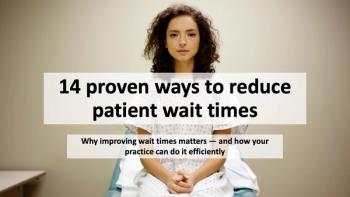
How value-based care helped our independent practice survive 2020
Our experience shows how key features of value-based care can position practices to be more resilient, adaptable, and future-oriented.
When the COVID-19 pandemic began to disrupt daily life in the U.S., many medical practices were left scrambling. Patient volumes plunged immediately, non-urgent care was postponed, and no one was sure exactly how long the shutdowns and mitigation precautions would last. By late April,
Fellow providers will understand that the situation was dire. In a strictly fee-for-service model, revenues at our independent practice would have plummeted, and it is not clear that we would have lasted more than a few weeks without significant cuts. But value-based care agreements proved to be an important lifeline and allowed our practice to continue serving patients even in the midst of strict lockdowns.
While there is no one-size-fits-all solution, our experience shows how key features of value-based care can position practices to be more resilient, adaptable, and future-oriented, whether dealing with a short-term crisis or the long-term challenges facing independent practices.
Quality Care & Shared Savings
A sizable share of our revenue is based on quality and ensuring positive clinical outcomes for the patients we serve. All care management programs are not created equal, but we were fortunate to have a partner in population health and value-based care that helped us guide our patients through this difficult time. From the start of the pandemic, we were able to adapt quickly to continue addressing patient needs and meeting quality goals by offering early prescription refill programs, identifying our most high-risk patients, and delivering COVID-19 “care packages” to their homes. These included thermometers, pulse oximeters, face masks, and other resources to help them feel safe and in control of their health during a period of tremendous uncertainty.
By taking advantage of these value-oriented opportunities, we continued to meet our quality goals and maintain our eligibility for quality incentives. Our value-based care partner even accelerated these incentive payments, which proved to be one of the most impactful financial supports for our practice’s revenue stream. Rather than waiting a year to see revenue, we began receiving monthly payments from Tandigm Health for staying on track and reaching our quality goals. This cash flow protected our bottom line and, more importantly, gave us peace of mind, thereby allowing us to continue prioritizing patient care rather than getting bogged down in non-clinical business challenges.
Virtual Care Resources
Although we’re looking forward to the day when we can see every patient back in the office, we realized that telehealth visits would be vital in carrying our patients through the pandemic. As we quickly pivoted, we benefited from webinars and best practices shared through our value-based care network to help ensure we could deliver impactful, personal, high-quality care for our patients in a virtual format. This was new territory for many of us—or at least a rapid acceleration of the use of telemedicine offerings—but I’m proud to say we’ve risen to the challenge.
At the same time, we needed to ensure these virtual visits could still drive revenue, and we were lucky to accomplish this by working with payers and value-based contracts. These reconfigured payment models for telehealth were crucial for many practices’ survival, especially among independent providers.
Collaborating with Specialists
Finally, after elective procedures were on hold for months, we needed to make sure our patients could catch up on preventive screenings and, when necessary, specialist visits. For example, population health partnerships helped us coordinate at-home colon cancer screening when we were not able to conduct in-person colonoscopies.
As value-based care adoption expands beyond primary care and into specialist practices, this shared savings model will help us approach patients more holistically as a coordinated team
Stability and Structure
Beyond the financial incentives, value-based care helps us put our best foot forward as a practice through the structured quality metrics and benchmarks. When it comes to my practice, my top priority is providing quality healthcare and establishing lasting, trusted relationships with my patients. Adopting a smart value-based care model—with meaningful achievement metrics and the supporting revenue—has allowed me to provide a superior level of care in a friendly and personalized environment while maintaining stability as an independent practice.
About the Author
Dr. Michael Attanasio is an award-winning Doctor of Osteopathy with over 18 years of experience. His practice, Ritner Medical Associates, is located in Philadelphia and partners with Tandigm Health on population health services. Dr. Attanasio is an active member of the American Osteopathic Association, the American College of Family Practitioners, and the American Board of Medical Examiners.
Newsletter
Optimize your practice with the Physicians Practice newsletter, offering management pearls, leadership tips, and business strategies tailored for practice administrators and physicians of any specialty.




